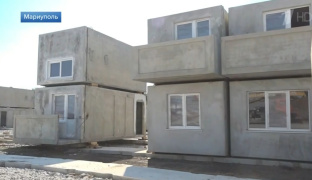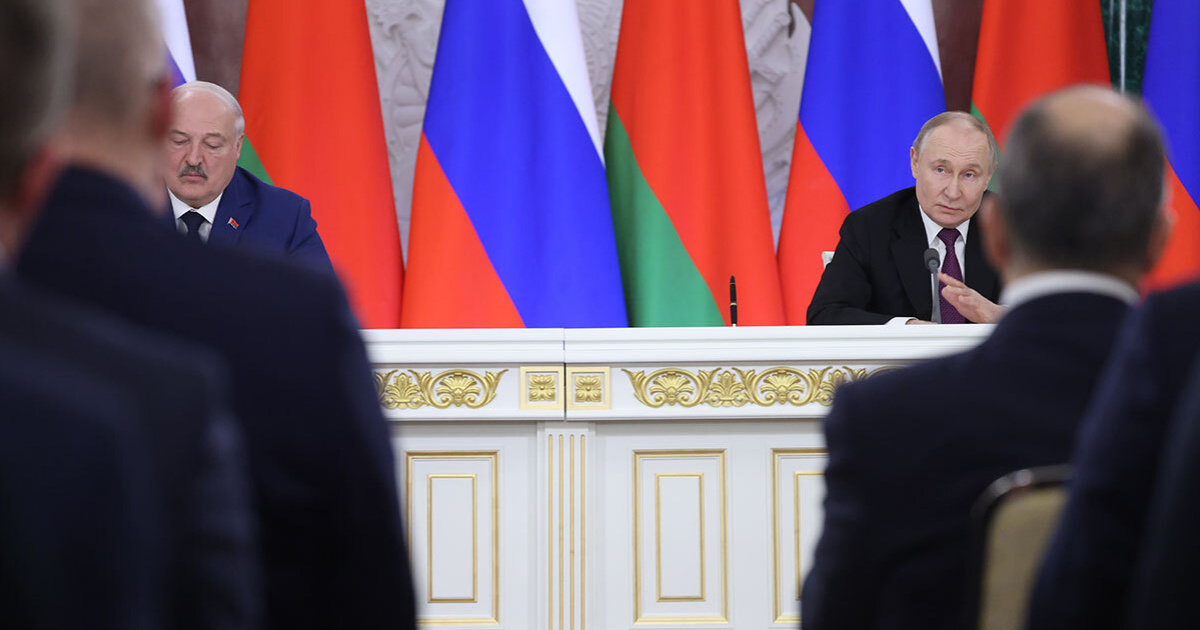
Economic growth in the temporarily occupied territories of the Donetsk, Luhansk, Zaporizhzhia and Kherson oblasts, as well as in Crimea after their de-occupation, will become the priority task for the Ukrainian authorities. Certain preparatory work has already been done, and now the decisive word belongs to the Armed Forces of Ukraine.
Energy sector: a "green" course
The energy sector will prioritize the development of so-called "green" energy, as indicated by the public statements of Deputy Head of the Presidential Office Rostyslav Shurma and Minister of Economy Yuliia Svyrydenko during the June conference on Ukraine's recovery in London.
Before the war, solar and wind power production (via solar power plants and wind power plants) in the southeast was rapidly developing due to extremely favorable weather conditions.
Currently, on the non-controlled territories, there remain the large wind farm Novoazovska (the Donetsk oblast), Botyivska WPP (the largest in Ukraine, among the top five largest in Europe), and the second most powerful (in Ukraine) Prymorska WPP (both in the Zaporizhzhia oblast).

This is how Botyivska WPP looked before the war
There are also complexes of small SPPs in Crimea and the Kherson oblast, with approximately 300 MW total capacity in each region.
It is known that in 2019, the "DNR" collaborators unsuccessfully attempted to launch the Novoazovska WPP. However, according to its management, the equipment was preserved before it was seized by the russian forces.
It is difficult to say in what condition these facilities will be after de-occupation. But in any case, stable strong winds and sunny weather will remain unchanged. The focus of the global economy (and therefore the Ukrainian economy as well) on the use of "green" electricity will undoubtedly persist.
Therefore, the mentioned SPPs and WPPs will either be rebuilt or simply restarted. It is also predictable that investors will return to pre-war projects in this industry, which were suspended due to the russian invasion.
In particular, in 2020, the Norwegian company NBT signed an agreement with the regional state administration for the construction of the Sofia WPP in the Zaporizhzhia oblast (Akimovsky district) with a capacity of 793 MW, costing €1.2 billion. This facility is expected to become the largest onshore WPP in Europe.
Additionally, the local authorities have a signed agreement with the company EuroCapeNewEnergy for the construction of a 500 MW WPP in the Melitopol and Pryazovia districts, costing €700 million. This agreement was signed in 2017.
But won't be possible to immediately abandon thermal power plants, so the destroyed thermal power plants in the Donetsk, Luhansk, Dnipropetrovsk and Zaporizhzhia regions will also need to be restored after the russian shelling.
Coal will have to be imported for their operation. Most of the mines in the occupied territories were unprofitable, so no one will revive them. Even before the war, the Ministry of Coal and Energy planned a phased closure of the mines. The war made it happen all at once.
In addition, the domestic demand for coking coal will decrease because metallurgy will also go "green". Therefore, post-war Donbas will definitely no longer be a mining region.
Regarding the mining industry, there are only prospects for the development of the Shevchenkivske lithium ore deposit in the Donetsk oblast and Kruta Balka in the Zaporizhzhia oblast (Berdiansk district).

The minerals in Kruta Balka, besides lithium, contain beryllium and other rare earth metals
Lithium (used in the production of car batteries) has become a critically important material for the global economy for several years now, due to the mass transition of developed countries to electric vehicles.
The main suppliers of lithium to the global market are Australia and Chile. However, leading global battery manufacturers are actively looking for alternative options.
Even before the full-scale war, in 2021, applications for the development of the Shevchenkivske deposit were submitted to the State Geological Survey of Ukraine by the Chinese company Chengxin Lithium and the Australian company European Lithium. Chengxin Lithium is also willing to work on the development of Kruta Balka.
With almost 100% certainty, they will remember their previous business plans after the war. And, of course, new investors may appear.
In a June interview with the media, R. Shurma emphasized that in this case, the authorities should not limit themselves to attracting investments in mining. It is necessary to create conditions for processing this ore on-site (i.e. in Ukraine) into finished products.
"The idea is that while extracting spodumene and producing lithium concentrate, we won't export it, but rather process it into hydroxide and carbonate in Ukraine. The goal is not to export hydroxide and carbonate, but to produce cathode materials in Ukraine. Therefore, our policy will be aimed at finding our place in the global supply chain and localizing this production in Ukraine", - said the deputy head of the presidential office.
This implies the creation of new metallurgical enterprises for the production of metallic lithium and products made from it. In other words, it will require multi-billion-dollar investments.
Industry: not everything will be revived
The prospects for reviving metallurgy as one of the main industries of the Donbas economy are weak. Yes, initially, the owner of Mariupol's Azovstal, R. Akhmetov, promised to rebuild the plant after de-occupation.
However, later, Yuriy Ryzhenkov, the CEO of Metinvest, clarified that there is a condition for investing in the restoration: solid guarantees of sustainable peace in Ukraine.
As previously noted by OstroV, such guarantees could only come from Ukraine's accession to NATO. But this scenario is unlikely in the foreseeable future, at least not at the moment.
Regarding the Yenakiieve, Mariupol and Donetsk metallurgical plants, as well as the Alchevsk metal plant and the Iliich plant in Mariupol, the same uncertainty exists as with the "green" power plants. It is unclear in what condition they will be after de-occupation.
It is also unclear how economically feasible it will be to restore them, given the European trend of prioritizing the use of "green" steel (produced without the use of coal).
The so-called EU’s "carbon tax" on imported steel produced by traditional technologies (i.e., blast furnace-converter method using coal) came into effect this year. Yes, Ukrainian producers were exempt from this tax by the European Commission, but only until the end of the war.
Previously, the association Ukrmetallurgprom emphasized that the "carbon tax" makes the export of Ukrainian steel to the EU unprofitable. Therefore, only the Kramatorsk Energomashspetsstal plant will definitely be revived.
This enterprise uses electric steelmaking technology, meaning its products fall under the definition of "green". Before the war, the main owner of Energomashspetsstal was the state corporation Rosatom, but in the fall of 2022, it was nationalized by the decision of the Verkhovna Rada among the companies with capital from the aggressor state.
After the war, the enterprise will need to find an investor since its main workshops were destroyed by the invaders’ rocket attacks. It is unlikely that the Ukrainian government will handle the restoration itself.
However, this possibility cannot be completely ruled out: in case the plant is transferred to SE NNEGC Energoatom or the JSC Ukrainian Energy Machines (Kharkiv).
There are also prospects for the Mariupol Azovelectrostal, particularly as an independent producer of "green" steel. This would be without being tied to the local wagon-building association Azovmash.
Before the war, Azovmash accumulated debts and experienced prolonged downtime even before 2014. Shortly before the occupation, the enterprise slowly began to revive production, but there were few orders. It is hard to say whether it can return to the market considering the previous (pre-war) problems.
Finally, two more representatives of "green" metallurgy in the region are the Donetsk electrometallurgical plant and Kurakhove’s Electrostal. The only condition for resuming their operations is a stable supply of scrap metal (raw material for steelmaking in electric furnaces).
Before the war, these enterprises were idle precisely due to a lack of scrap metal. Its collection in Ukraine decreased from year to year, and this trend is likely to continue in the future.
But if we assume that Azovstal, Alchevsk Metallurgical Plant, and Illich Steel and Iron Works do not resume operations, the demand for scrap metal in the region will significantly decrease. This, in turn, will eliminate its shortage for "green" metallurgy.
As part of the government's post-war recovery strategy for Ukraine, R. Shurma emphasized the importance of developing precisely this industry, which provides high added value to the economy.
The first steps in this direction have already been taken, and they involve two operating large metallurgical enterprises in the southeast. These are the plants Kametstal and Zaporizhstal in the Dnipropetrovsk and Zaporizhzhia oblasts.
During the London conference on Ukraine's recovery, a memorandum was signed between the Ukrainian government and the Metinvest holding, which includes Kametstal and Zaporizhstal.

Minister of Economy Yuliia Svyrydenko and the CEO of Metinvest Yuriy Ryzhenkov sealed the agreements with their signatures
The document envisages the transition of these enterprises from blast furnace-converter to electric steelmaking production by 2035. This process will not happen quickly, but the European "carbon tax" will accelerate it.
The winding down of coal mining in the Donbas makes the revival of local engineering plants that produced mining equipment (Donetskhormash, Horlivka Machine-Building Plant, etc.) unpromising since the domestic demand for their products will approach zero.
Their products were not competitive previously, and in recent years, Ukrainian private miners preferred to buy Chinese and Czech tunneling machines and other equipment.
The shift to "green" steelmaking technologies also raises questions about the future of Novokramatorsky and Starokramatorsky Machine-Building Plants, the manufacturers of metallurgical equipment.
They are also specialized in producing equipment for blast furnace-converter production and cannot offer anything for electric steelmaking to those plants.
That is why, among others, the aforementioned London memorandum between Metinvest and the Ukrainian Cabinet of Ministers was signed with a representative of the Austrian machinery concern Primetals, one of the world's leading manufacturers of metallurgical equipment.
Finally, another major enterprise destined to remain a museum exhibit of the Soviet era is the Lysychansk oil refinery. Once it operated on Soviet/russian oil, but its supply ceased even before the war. Even after its conclusion, the resumption of pumping in Lysychansk is highly unlikely. Considering everything that has happened between the two neighboring countries in recent years, restoring previous economic ties will take decades.
Agricultural sector: awaiting a "great leap"
The prospects of the agricultural sector in the southeast and Crimea are directly related to the restoration of the Khakhovka Dam and the development of land reclamation. According to R. Shurma, there is room to expand here.
During the Soviet period, the irrigated agricultural land in Ukraine exceeded 2 million hectares, and the total potential for such land was 3.5-4 million hectares. Before the war, 800-900 thousand hectares were irrigated in Ukraine. Thus, this figure can be increased by 3.5-4 times.
"Our strategy is to increase the irrigated land area by at least 2 million hectares", - emphasized the deputy head of the presidential office in a June interview with the media. He also highlighted the importance of developing import substitution in agriculture.
Currently, 70% of the cost of 1 ton of grain accounts for imports, including 50% for seeds, 95% for plant protection products (pesticides, fungicides, herbicides), 70% for fuel, 50% for fertilizers, and 70% for agricultural machinery. Overall, before the war, imports for these items reached $5 billion annually.
"We will attract the world's best companies to build factories for the production of plant protection products, seeds, agricultural machinery, and fertilizers, including not only nitrogen but also complex fertilizers. This will bring us tens of billions of investments, reduce imports by $5 billion, i.e., improve the trade balance and establish a more sustainable vertically integrated system", - stated R. Shurma.
Obviously, these factories will be built in the southeast region, the main grain producer in Ukraine. Creating them, for example, in Lviv and then transporting fertilizers, seeds, agricultural machinery, and pesticides from there to agrarians in Mariupol, Melitopol and Kherson would be unprofitable. Transportation costs would also have to be paid.
It is also evident that the agenda will include the resumption of the operation of the Horlivka association Stirol and the Sievierodonetsk association Azot, major producers of nitrogen fertilizers.
Replacing coal mining and traditional ferrous metallurgy with the agro-industrial complex, "green" energy, and metallurgy in the post-war economy of Donbas will significantly improve the environmental situation in the region.
This, in turn, will create prerequisites for the development of tourism and resort industry on the Azov Sea coast.
By Vitaliy Krymov, OstroV




